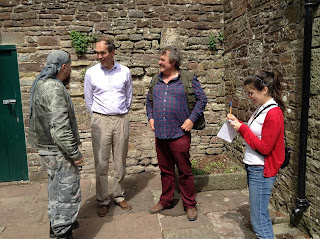Severn Valley Ware at Berkeley

Archaeologists really get excited about pottery, and here at Berkeley we've recently become excited about a piece of Severn Valley Ware that was found last week. This particular type of pottery was produced at kiln sites all along the valley of the river Severn, including at kilns located close to Berkeley. This particular sherd is a little unusual as it's the foot ring of a vessel fashioned to be re-used as a pot lid. View of Severn Valley Ware Severn Valley Ware was produced and distributed in Britain from the second to the fourth centuries A.D, and we found ours in a context underneath a Saxon building. However, the re-use of this vessel as a pot lid means that its life span has been extended and it may well have continued in use into the Anglo-Saxon period. It's a distinctive type of ware which is orange or red-brown, produced along the middle Severn Valley, and distributed across Western Britain. It's usually fine textured, burnished, wheel thrown, and the




